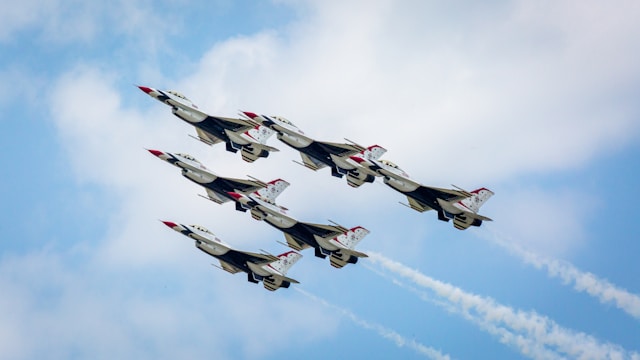The future of warfare is already taking shape as artificial intelligence continues to make significant tailwinds in military aviation. Imagine an F16 fighter jet controlled by AI and not a human pilot! Well, it is no longer a farfetched dream but a reality already materializing as the US strengthens its dominance in military aviation.
AI Controlled F-16
In one of the most significant advances in military aviation, US Air Force Secretary Frank Kendall gave a thumbs up to the operation of an F-16 fighter jet with no human pilot. The confirmation follows the completion of a dogfight at the Edwards Air Force Base whereby the US Air Force successfully tested its AI technology in a fighter jet without any human control.
Vista is the name of the AI-controlled F-16 that flew the Air Force secretary in lightning-fast manoeuvres at more than 550 miles an hour. The AI-powered jet went nose to nose with a second human-piloted F16 as both raced 1000 feet of each other, twisting and turning without any incidence for more than an hour.
No country has successfully tested an AI-powered jet other than the US, marking a significant milestone for the superpower. While China is also working on its own AI capabilities, it has yet to give any indication of developing and running tests on AI jets outside a simulator.
While the technology is not fully developed, the Air Force secretary insists he has seen enough to trust it when launching weapons in war. Nevertheless, there is strong opposition to using AI to manage and control powerful military hardware. A bone of contention for arms control and humanitarian groups is that AI could end up being used to drop bombs without human consultation.
Amid the integration of AI into military operations, there is growing concern about ceding life and death decisions to AI-powered sensors and software. Nevertheless, the Air Force chief insists there will always be human oversight, and the AI-powered machine will never be left to operate autonomously.
The US military, among others worldwide, is increasingly shifting its attention to AI-enabled planes to enhance security, cut costs, and improve strategic capability. Future war scenarios already depict swarms of unmanned aircraft battling it out in the air to attack enemy defences with minimal human control. This underlines the potential cost savings and strategic benefits of AI-enabled planes, making the audience feel optimistic about the future of military technology.
Artificial General Intelligence Push
The development and testing of an AI-powered and controlled fighter came as OpenAI chief Sam Altman insisted they were more than ready to spend up to $50 billion a year developing artificial general intelligence. AGI is the level at which an AI system can reason like an intelligent human and even more.
While it is still being determined if there is an AI system in operation that has achieved AGI capability, Elon Musk believes OpenAI has achieved this and needs regulation. OpenAI has made significant AI developments thanks to its partnership with Microsoft, which has resulted in it receiving more than $13 billion in financing.
Its launch of AI-powered chatbot ChatGPT in 2022 marked a significant milestone, signifying a breakthrough in AI technology. Nevertheless, Altman believes ChatGPT is far from achieving the AGI status, insisting it is mildly embarrassing.


